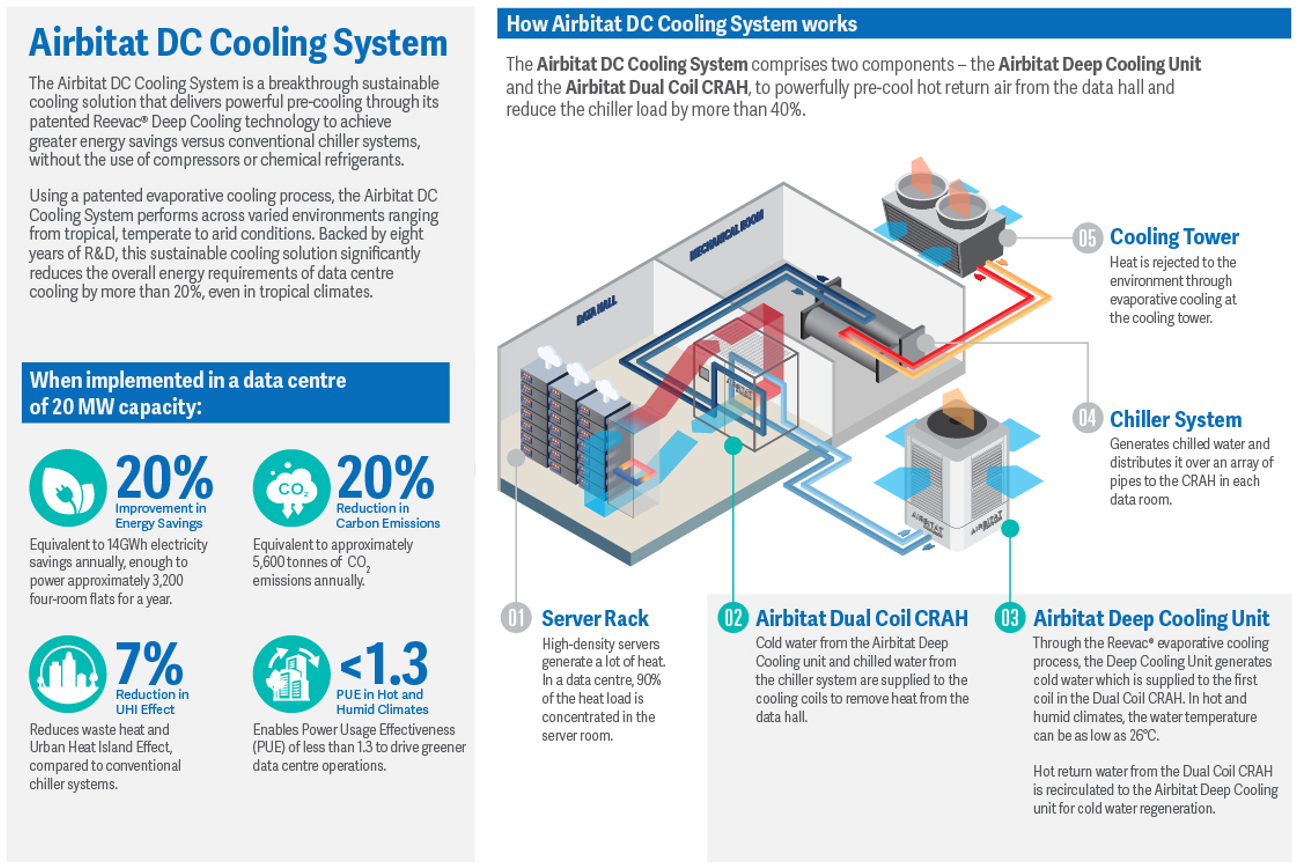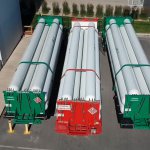Clever cooling solutions could keep data centers’ energy demands in check

It would be hard to imagine modern life without data centers – they power business and support industrial activity throughout the world. But keeping all of those servers running requires a huge amount of energy. The International Energy Agency estimates that the data center industry currently uses around 1% of the world’s electricity – and that figure could reach double digits by 2030. But if data center power use is a significant issue, then data center cooling is a crucial factor, too.
Despite the growth in the number and size of facilities around the world, the electricity demand hasn’t scaled as sharply, and that’s thanks to more efficient architectures that strip out everything that’s surplus to requirements. Back in 2016, Lawrence Berkeley National Laboratory estimated upgrading from small to hyperscale facilities could bring about a 25% saving in energy use, and there are now hundreds of these much larger data centers in operation.
Finding new ways to achieve data center cooling
Innovation in data center cooling systems and identifying ways to reuse, rather than waste, the heat emitted by the racks and racks of computers, has played a major role in moderating energy use. Here on TechHQ we’ve covered initiatives that have pushed this innovation forward, such as Facebook sending its hot water to greenhouses to warm them in the winter, and this approach that uses water-cooled facilities, developed by Nautilus Data Technologies, which builds facilities that float.
Other big names, like Microsoft in this case, have looked to the sea as a solution for not just cooling, but also as a way to provide fast cloud services to coastal populations. In a pilot study ending in 2020, the computing giant concluded that underwater data centers were ‘reliable, practical and use energy sustainably.’
Efficiency drive
Over 40% of a data center’s energy needs is used for cooling, and data centers commonly utilize conventional water-cooled chiller systems, which not only have high energy and water consumption requirements, but also release waste heat into the environment. Adding to that there’s no let-up in the appetite for cloud services, and the trend for businesses to migrate more and more activity from on-premises to hosted providers persists.
European data center demand – as measured in the key markets of Amsterdam, Dublin, Frankfurt, London and Paris – was up by around a third in 2021, based on analyst reports. But while this may be good for growth and company turnover, it raises concerns in terms of energy use. And there are at least two knock-on effects to think about here.
There’s the impact on other commercial developments and nearby housing – law firm Pinsent Mason has highlighted concerns such as the warning by Ireland’s Commission for Regulation of Utilities that data center growth could lead to electricity supply risks elsewhere. Modeling suggests that as much as a third of Ireland’s demand for electricity could come from data centers by 2030. And the forecast doesn’t appear to include planning applications for new facilities, which would push those numbers higher.
Another important consideration is the extent of the emissions released into the atmosphere where electricity has been generated using fossil fuels. Those emissions cast a shadow on the benefits that data centers bring against the backdrop of climate change. And even when power is provided by green technology, any efficiency gains that can be squeezed out of the system allow operators to do more with the resources they have to hand.
Swedish telecoms company Telia, which operates in a number of northern European countries, celebrated the opening of Estonia’s first solar-powered data center (sited in the borough of Laagri, towards the top of the country) in the summer of 2020. And the firm has gone on to use similar technology to run a number of its mobile base stations – the communications points for cellphone networks.
Like the Nautilus example, Telia cuts down on wasted energy by using the heat generated by the IT infrastructure to warm its office buildings nearby. Also, it’s worth adding that solar-powered facilities are very much a trend – for example, Facebook’s Snipesville II data center (sited in Georgia, US) that became fully operational in December 2021 has more than 350,000 solar modules tracking the sun for energy.
And having gone to all of the effort (and expense) of collecting renewable power, operators want to make the most of it by using the electricity as efficiently as they can, which is where the latest commercial cooling technologies fit in. And many see these as critical to ensuring the sustainable growth of the industry.
Tropical wonder with global appeal
ST Engineering recently announced a breakthrough in cooling systems with the launch of its new Airbitat DC Cooling System, marking its entry into the data center cooling market. An innovation by its Urban Environment Solutions (UES) business, the Airbitat DC Cooling System delivers powerful pre-cooling for tropical data centers, achieving annual net energy savings of more than 20% over conventional chiller systems alone. This translates to annual energy savings of about $104 per kW of heat load.
Combined with existing chiller systems, the Airbitat DC Cooling System enables data centers to reach a targeted Power Usage Effectiveness (PUE) of below 1.3 (a perfect score of 1.0 would mean that all of the energy supplied is being used by the IT equipment and anything above that reflects cooling needs and power drawn by other support services). This performance is said to represent a significant improvement over current regulatory requirements for data centers and positions it to meet more stringent standards for future data center builds. Online PUE calculators score 1.3 in the range ‘Efficient’ to ‘Very Efficient’.
Gareth Tang, Head of Urban Environment Solutions at ST Engineering, points out that the units are not just for new builds and can be readily deployed in existing data centers, allowing operators to trim down the power needed to run their sites.

Source: ST Engineering
Backed by extensive R&D efforts, the Airbitat DC Cooling System features a Dual Coil Computer Room Air Handler (CRAH) and a Deep Cooling Unit that’s powered by the patented Reevac Deep Cooling technology. The Airbitat DC Cooling System works by pre-cooling the hot return air in the data hall to reduce over 40% of the heat load from the existing chiller system. This arrangement has been found to lower the overall energy burden for cooling by more than 20%.
The Airbitat DC Cooling System can operate under varied climatic conditions ranging from hot and humid, to hot and dry environments – a wide operating window that suits many different regions around the world. Smart controls built into the setup detect ambient psychrometric conditions and automatically adjust its cooling modes in real-time for consistent energy-efficient cooling. Lastly, the modular layout and ability to scale on demand to accommodate different data center cooling requirements (as well as structural and layout constraints) allow for easy integration in both brownfield and greenfield developments.
Additional reporting by TechHQ’s sister site: TechWire Asia










